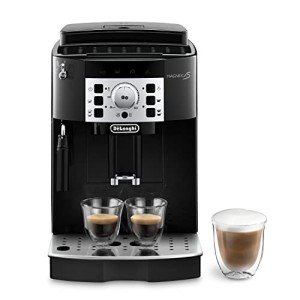The No. One Question That Everyone Working In Bean To Cup Coffee Beans Must Know How To Answer
Bean To Cup Coffee Beans: Elevate Your Coffee Experience
Coffee has actually ended up being more than simply a morning routine; it represents a lifestyle for lots of. Over the last few years, the pattern of “bean to cup” coffee has gained considerable traction, attracting coffee enthusiasts who desire an unrivaled brew experience. This in-depth guide will dive deep into the concept of bean to cup coffee, its benefits, various types of coffee beans, and even the very best methods for developing.
What is Bean to Cup Coffee?
Bean to cup coffee describes the process of making coffee directly from whole coffee beans. The “bean to cup” journey includes numerous stages: picking quality beans, grinding them freshly, brewing them using a system created particularly for this approach, and enjoying the end product. This process is typically assisted in by specialized coffee machines that feature integrated mills.
The Bean to Cup Coffee Process
The journey from bean to cup generally incorporates the following steps:
- Selection of Beans: Picking high-quality beans from numerous regions.
- Grinding: Freshly grinding the coffee beans to maintain flavor.
- Developing: Using hot water to extract coffee tastes according to choices.
- Delighting in: Relishing the rich taste and scent directly from freshly brewed coffee.
Benefits of Using Bean to Cup Coffee Beans
- Freshness: Beans can be ground fresh whenever, maintaining the natural aromas and flavors.
- Quality assurance: Consumers have higher control over the type and quality of beans utilized.
- Personalization: Easily tailored brews from the grind size to the coffee strength.
- Convenience: Many bean to cup machines are easy to use, making coffee preparation effortless.
Advantages Table
Advantages
Description
Freshness
Retains optimum fragrance considering that the coffee is ground newly.
Quality assurance
Users pick their coffee beans for preferred taste.
Customization
Direct control over grind size, strength, and more.
Convenience
Easy operation with minimal steps for brewing.
Types of Coffee Beans
When it pertains to bean to cup coffee, the choice of beans can considerably affect the taste profile. The two main types of coffee beans are:
Arabica: Known for its sweet and soft taste, Arabica beans are the most popular worldwide, accounting for about 70% of the world's coffee production. They frequently have a vast array of flavors, from fruity to nutty.
Robusta: These beans have a stronger, harsher taste compared to Arabica and contain more caffeine. Robusta beans are often used in espresso blends for added body and crema.
Other Types of Beans (Brief Overview)
- Liberica: Known for its distinct and distinct profile, often explained as fruity and flower.
- Excelsa: A variety of Liberica, typically used to supply tartness in blends.
Popular Bean to Cup Machines
There's a large variety of bean to cup coffee machines on the marketplace, dealing with the varying needs of coffee drinkers. Here's a list of popular brand names and designs:
- DeLonghi Magnifica: Known for its adaptability and ease of use.
- Jura E8: Offers a high-end experience with its streamlined style and advanced functions.
- Breville Oracle Touch: Combines automatic features with manual controls for the very best of both worlds.
Frequently asked questions about Bean to Cup Coffee Beans
**Q1: How long do coffee beans last?A1: Roasted coffee
beans generally last for about 2-4 weeks when kept in an airtight container, far from heat and light. For optimum flavor, it is best to consume them as fresh as possible. Q2: Is it better to grind coffee beans right before brewing?A2: Yes, grinding coffee beans prior to developing maximizes freshness and flavor. Pre-ground coffee
can lose its ideal taste within minutes. Coffee Machine From Beans : Can I utilize any kind of coffee bean in a bean to cup machine?A3: Most bean to cup machines can accommodate numerous coffee beans,
however it's suggested to examine your machine's specs for the very best outcomes
. Q4: How frequently need to I clean my bean to cup machine?A4: It is suggested to clean your machine every 1-2 weeks, depending on use. In-depth cleaning must be done at least
once a month. Developing Techniques While bean to cup machines
streamline the brewing process, different approaches can be used for the very best outcomes: Espresso: Strip down the essence of the bean and supply a focused shot with rich flavors. French
Press: A method that allows the coffee premises to steep, yielding a profound body and flavor. Pour-over:
- *A strategy that allows accurate control over developing time and temperature, causing a more fragile flavor extraction. The bean to cup coffee experience goes beyond traditional brewing techniques, providing an intimate relationship with the coffee-making process. By deciding for top quality beans picked for private preferences and using efficient machines, coffee enthusiasts can take pleasure in an abundant and fresh cup**
of coffee every day. The capability to manage every aspect of the developing process elevates it from a basic drink to a crafted experience, making sure that each cup reflects individual taste and quality. Embracing the bean to cup method is not simply about drinking coffee; it's about appreciating every moment, scent, and taste that comes together in a perfect cup.  **
**